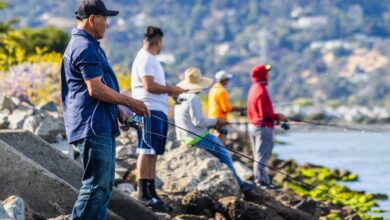How Do You Prepare for a Snowshoeing Adventure
Snowshoeing is an exhilarating way to explore winter landscapes, combining the thrill of hiking with the beauty of a snowy terrain. However, like any outdoor activity, it requires some preparation to ensure a safe and enjoyable experience. Proper planning can make the difference between a memorable adventure and a challenging ordeal. Here’s how to gear up for your snowshoeing escapade.
Understand the Basics of Snowshoeing
Before you hit the trails, familiarize yourself with the fundamentals of snowshoeing. Essentially, snowshoes are designed to distribute your weight over a larger surface area, preventing you from sinking into deep snow. Learning how to fasten your snowshoes and adjust the bindings is crucial. Many rentals come with instructions, but it’s beneficial to watch a tutorial or practice before heading into the wilderness.
Choose the Right Location
Selecting the right trail is vital for a successful snowshoeing experience. Research local trails and assess their difficulty levels, as well as their accessibility during winter months. National parks and state forests often maintain marked snowshoeing paths. Look for trails that are suitable for your skill level and ensure you’re aware of the weather conditions in the area. Websites and apps dedicated to outdoor activities can provide valuable insights into trail conditions and user reviews.
Gear Up Properly
Dressing appropriately is key to staying warm and comfortable while snowshoeing. Start with a moisture-wicking base layer to keep your skin dry, followed by an insulating layer for warmth. A waterproof and breathable outer layer will shield you from wind and snow. Don’t forget to wear thick, warm socks and waterproof boots. Snowshoeing can generate significant body heat, so consider a layering system that allows you to easily adjust your attire.
For your hands, insulated gloves or mittens are essential. A good hat will help retain heat, and a neck gaiter or scarf can protect your face from the elements. Lastly, sunglasses or goggles can shield your eyes from the sun’s glare reflecting off the snow.
Pack the Essentials
When preparing for a snowshoeing adventure, packing the right supplies can enhance your experience. Always bring a backpack to carry your gear. Hydration is crucial, so pack a water bottle or a hydration bladder. Snacks, such as energy bars or trail mix, will help maintain your energy levels during the hike.
A first-aid kit is a must-have, along with a map of the area and a compass or GPS device. If you’re venturing into remote locations, consider carrying a whistle and a flashlight. These items can be invaluable in emergencies, helping you signal for help or navigate in low visibility.
Know Your Limits
While snowshoeing is accessible for many fitness levels, it’s essential to stay within your capabilities. Start with shorter, less strenuous trails to build your confidence and endurance. Pay attention to the physical demands of trudging through snow, which can be more challenging than hiking on solid ground. Listen to your body, and don’t hesitate to turn back if you’re feeling fatigued or if weather conditions worsen.
Stay Safe and Informed
Before embarking on your journey, check in with local ranger stations or visitor centers for updates on trail conditions. Weather can change rapidly in mountainous areas, so it’s wise to be prepared for shifting conditions. Inform someone of your plans, including your expected return time. This simple step ensures that someone is aware of your whereabouts in case of unexpected delays.
Embrace the Experience
Snowshoeing is not just about the destination; it’s also about enjoying the journey. Take time to appreciate the serene beauty of snow-covered landscapes. Stop to capture photos, observe wildlife, or simply relish the quiet of winter. Engaging with nature enhances the adventure and creates lasting memories.
Preparing for a snowshoeing adventure involves careful planning and consideration. By understanding the basics, selecting the right location, gearing up properly, packing essentials, knowing your limits, and staying safe, you can ensure a fantastic experience. With the right preparation, snowshoeing can be a rewarding way to connect with nature and explore the winter wonderland.







